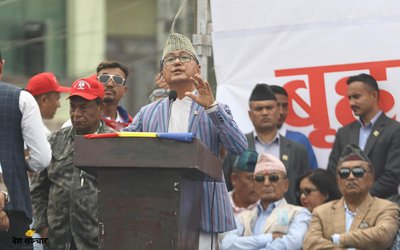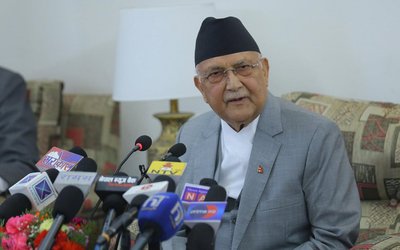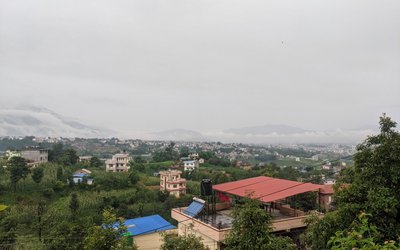
Agriculture, which was earlier the backbone of Nepalese economy, is now further loosing ground, thanks to the devastating earthquake and the damage it has incurred to the sector.
According to the Asian Development Bank (ADB)’s macroeconomic update, the agriculture sector of the country will contribute the least to the country’s growth in the upcoming fiscal year. Instead, it has been predicted that the service sector is going to play a major role in the growth of the Gross Domestic Product (GDP), followed by the industrial sector. In view of the ADB’s outlook being ‘cautiously optimistic’, it is crucial that such a prediction about Nepal’s agricultural sector should, by all means, raise eyebrows and be further parsed.
It is true that the productive sectors of the country, of which agricultural sector forms a part, has suffered a huge loss. According to the Post Disaster Needs Assessment (PDNA) published on 21 June, 2015, the productive sector has incurred damages and losses equivalent to NPR 178 million, with damages and loss equal to NPR 28 million incurred by the agricultural sector alone. The current total estimated needs of the agricultural sector is estimated to be approximately NPR 15 million.
There may be many valid reasons behind the contribution of the agricultural sector in the country’s gross domestic product appearing bleak. First, there was severe loss of stored crops in many earthquake affected areas. As many houses and settlements crumbled due to the earthquake, so did the stored agricultural inputs and products such as seeds, rice, millet, maize, and potatoes were dispersed amongst the debris and the rubble. Second, land cracks in the fields, root damage, and landslides caused due to loose soil and heavy monsoon rains greatly increased the standing crop losses. Third, existing kitchen gardens, due to their proximity to damaged houses, were destroyed. Last, the disaster has destroyed markets and infrastructures such as roads, irrigation and drainage canals. All these are very likely to have a huge impact on the country’s capacity to produce and transport agricultural products, which is food for some and food along with means of livelihood for others. Lack of food and source of livelihood will decrease working and investing capacity of a majority of the population as a huge portion of the population of Nepal is highly dependent on agriculture. Decrease in working and investing capacity will automatically lead to decreased resilience and may lead to low contribution to the country’s growth.
These reasons, among others, have factored into ADB’s predictions regarding the contribution of agricultural sector to the growth of the country. However, it is also necessary to acknowledge that rejuvenating the agricultural sector post the disaster has been a key priority of the Government of Nepal, non-governmental organizations, and many humanitarian aid agencies. Granted,in the immediate aftermath of the earthquake, the government and many organizations sought to meet the immediate shelter needs of earthquake affected people. Prioritizing shelter needs has not, by any means, undermined the importance of agricultural sector and the need to support it. The government and national and international non-government organizations do recognize that once the immediate shelter needs are reasonably addressed and the recovery phase begins, agricultural sector will be and should be prioritized; they recognize that this should be done to ensure that a majority of Nepalese population that reside in rural areas and are largely dependent on agriculture get the opportunity to build their livelihood and communities in a sustainable manner.
Besides, support to the agricultural sector can be provided in various productive and cost-effective ways. Simply providing seed support and agricultural tools to earthquake affected households can drastically increase their capacity to farm. As a majority of women population in rural areas are involved in farming, they can be mobilized through capacity building trainings and mobilization can be done through women’s groups and organizations. Key market players can also be mobilized and included in assisting affected markets to recover so that households can purchase and invest in income-generating activities.
It is necessary to question whether the support that the agricultural sector is likely to receive during the early recovery phases and several ways in which agricultural productivity can be increased have been taken into consideration while predicting the sector’s contribution to GDP growth. If not, then they have to be in order to avoid lack of interest and thus, severe lack of investment in reviving Nepal’s major productive activity. Agricultural sector – a source of food and livelihood for many in Nepal – should be boosted by optimism and not just cautious optimism. And we are not building castles in the air – our optimism is an informed one.
- Poor (country) on a pile of money
- Dec 16, 2016
- Careful Financial Regrouping Cutbacks Imminent
- Nov 18, 2016
- Women Securing Water
- Oct 01, 2016
- Faithful or Fearful Fluctuations
- Aug 31, 2016
- Walking on Prachanda path?
- Aug 11, 2016
















